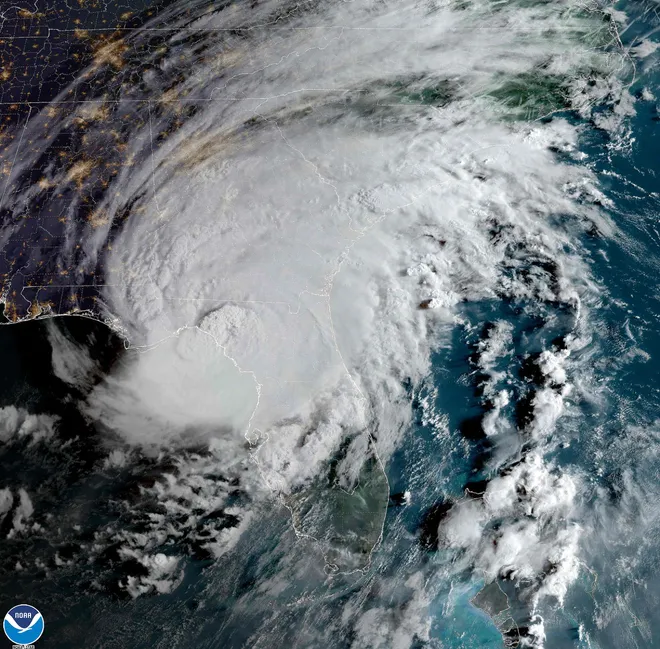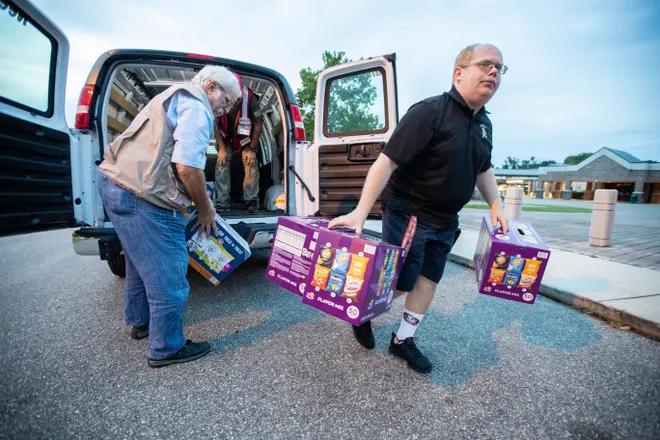Where did Idalia make landfall? What to know about Florida's Nature Coast and Big Bend
Hurricane Idalia slammed into Florida's Big Bend on Wednesday, bringing an "unprecedented event" to the state's Nature Coast where residents and travelers can go to discover the "real Florida."
The Big Bend, where the panhandle meets the peninsula, is densely forested and rural. Florida's Nature Coast offers visitors a chance to enjoy the state's natural beauty, far removed from big cities and other popular tourist attractions, according to the region's website.
“The counties of Florida’s Nature Coast believe that many people − our residents, and those who travel here from far away − think having a good time involves more than expensive restaurants, theme parks and crowded beaches,” the website said.

Florida's Nature Coast is home to dense forests, prairies and blackwater rivers
The Nature Coast is an area of more than 1 million acres where visitors can hike, kayak, bike, fish, bird watch and star gaze not far from local restaurants, hotels and "quaint historic towns," according to its website.
Most of the population in the Big Bend lives along the Apalachee Bay, a swampy swath of the state where parts of the coastline remain undeveloped. Inland, three state forests connect the panhandle to the peninsula, and the tall pines that line the Big Bend Scenic Byway are very sensitive to wind damage and pose a threat to homes in high-speed winds.
“When you want to get away, we have what you’re looking for," the website says. "Forests to explore, blackwater rivers and crystal clear spring-fed streams to paddle, secluded spots to camp and trails to ride and hike."
Big Bend is mostly rural, thinly populated
Eight counties make up the Nature Coast, which stretches along the Big Bend area from Apalachee Bay to Anclote Key, according to the region's website. The National Hurricane Center said Wednesday that radar imagery indicated the eye of Idalia made landfall along the coast near Keaton Beach in Taylor County, one of the most rural and economically challenged areas of the state.
Taylor County, the southernmost county in the Big Bend, has a population of about 22,000, ranking it 54th in population out of the state's 67 counties. In 2021, about 18% of the residents lived below the poverty line.

Storm is 'unprecedented' in the region
The National Weather Service in Tallahassee described the storm as unprecedented because no major hurricane − Category 3 or higher − has hit Apalachee Bay. A storm of this magnitude has not slammed into the area since the late 1800s, Florida Gov. Ron DeSantis said Tuesday during a press conference at the state's Emergency Operations Center.
University at Albany atmospheric scientist Kristen Corbosiero told the Associated Press that Idalia “is going to bring some pretty massive storm surge,” because of the Big Bend's unique shape.
“The water can get piled up in that bay. And then the winds of the storm come around, they go around counter-clockwise, that’s going the same direction, the same shape of the bay so that water can just get pushed in there," she said.
Franklin, Wakulla and Taylor counties, coastal areas on Apalachee Bay, did not have shelters available for evacuees. So some Floridians who live on the Gulf were forced to travel hours to Tallahassee to take shelter.
Contributing: John Bacon and Christopher Cann, USA TODAY; Ana Goni-Lessan andAlaijah Brown, Tallahassee Democrat; the Associated Press
Disclaimer: The copyright of this article belongs to the original author. Reposting this article is solely for the purpose of information dissemination and does not constitute any investment advice. If there is any infringement, please contact us immediately. We will make corrections or deletions as necessary. Thank you.





